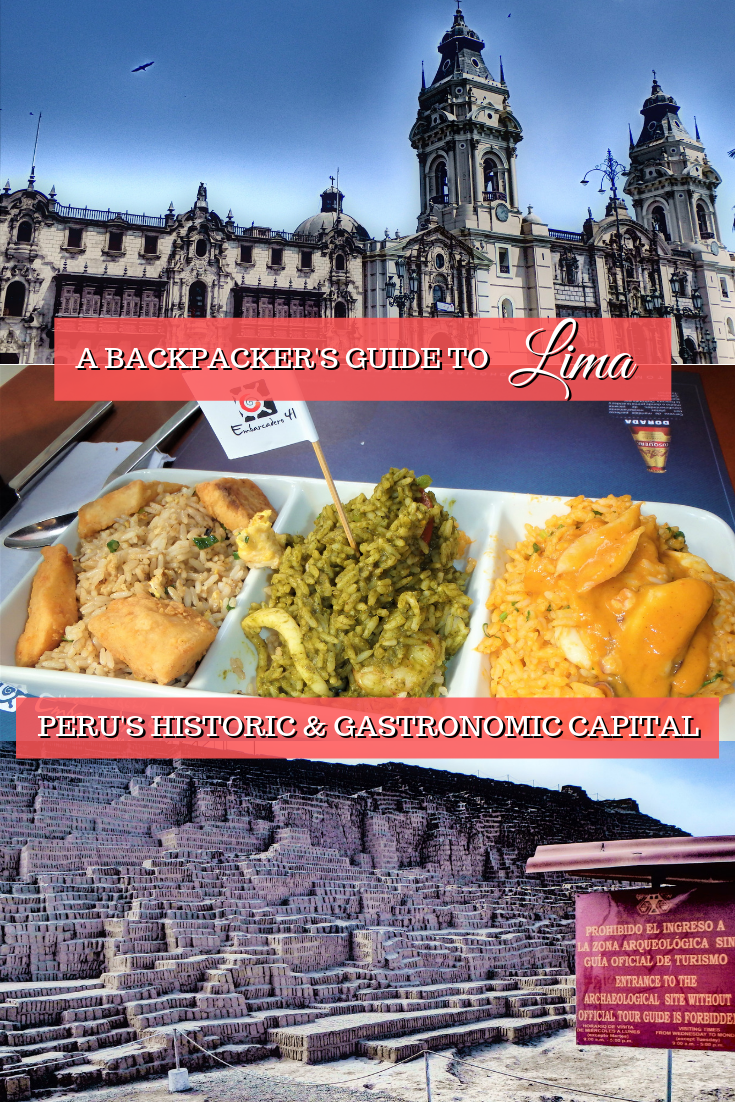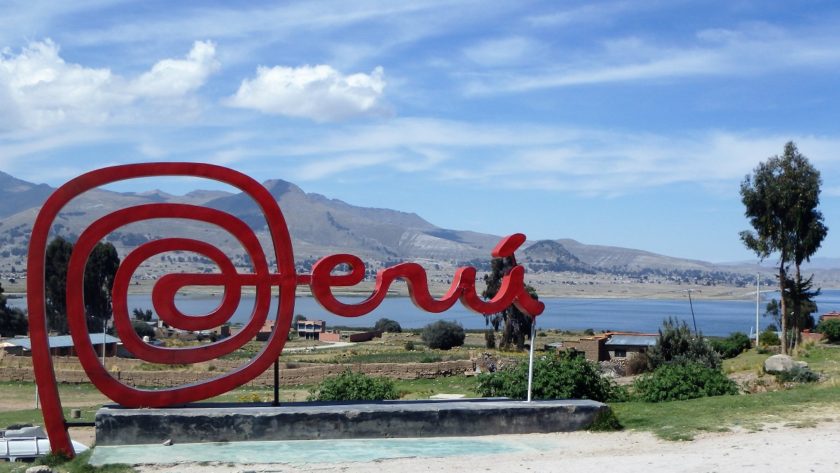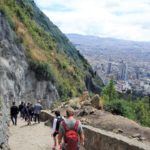Lima is a remarkable city that should be on every backpackers bucket list when travelling to Peru in South America.
The country’s vast cultural diversity is evident when exploring the capital’s sights, learning it’s history and – the best part – sampling it’s food.
An enticing fusion cuisine, a spotlight has shone on Peru for the better part of a decade thanks to their gastronomic delights. Lima, in particular, is often touted as the food capital of South America.
On a backpacker’s budget, we obviously couldn’t afford the indulgence of Lima’s world renowned restaurants such as Central or Astrid y Gaston. However we still managed to find a few gems around the city that offered a delicious taste of the city for a much more modest price.
Our Backpackers guide to Lima will share how you too can explore and taste this city on a budget!
What to do in Lima
Explore the city’s Centro Historico
There is just so much to see around Lima’s historical centre. It’s totally possible to wander the streets independently but we feel travellers would miss out on the knowledge and very essence of exploring a new city.
Still budget-friendly, we always recommend backpackers (or anyone!) to join on a free walking tour. Who better to know the ins-and-outs than a local?
Our free walking tour met in the popular district of Miraflores, at Kennedy Park. It was good to collectively head downtown together as a group, although there were a few hiccups with the bus…
Once downtown our guide led us to the heart of Lima’s Centro Historico, the Plaza de Armas.
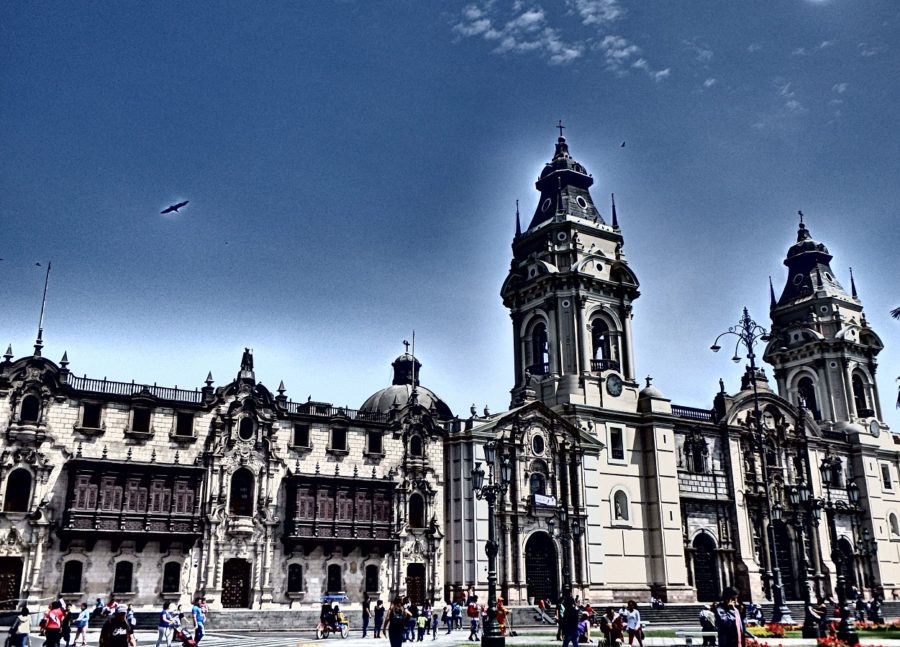
When we arrived we found the plaza buzzing with energy. There were people everywhere! The roads along the plaza were closed, there were stages set up and small parades going around.
Apparently, this is a normal Sunday in Lima!
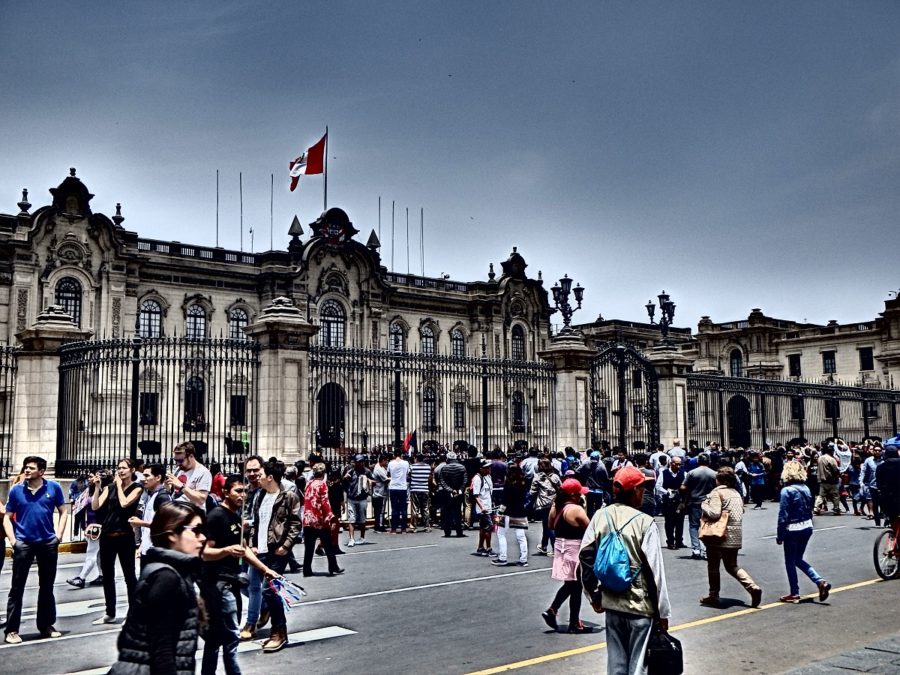
Also framing the Plaza de Armas is Lima’s Presidential Palace. Here the ‘Changing of the Guard’ takes place daily at 11am with a brass band playing at noon.
I kid you not, the band played Despacito. We were in stitches!
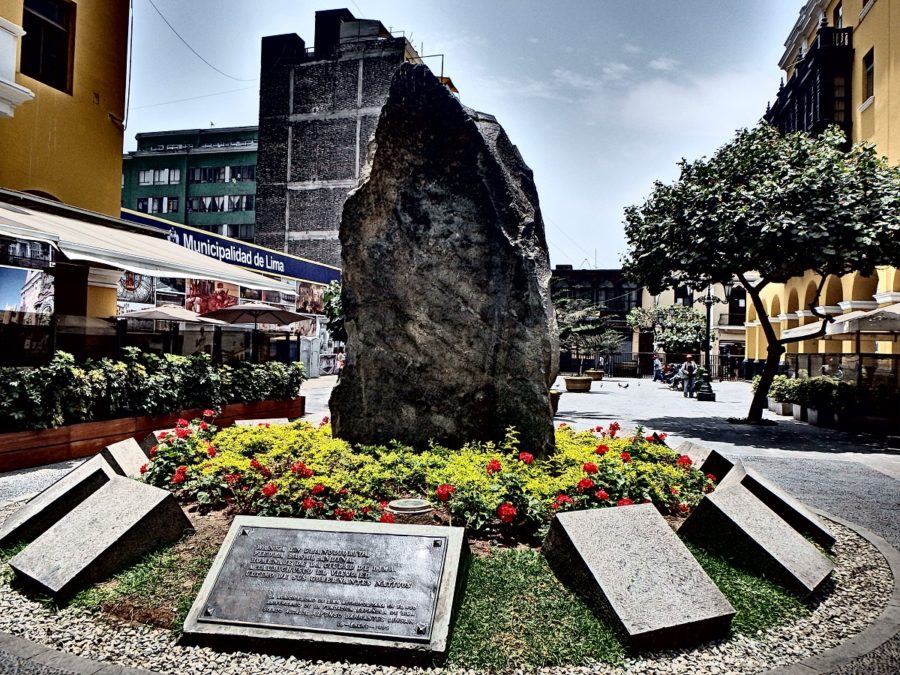
There are a lot of churches
A block from the centre is the Iglesia de Santo Domingo, which we visited during mass. One of Lima’s most historical sights, this church has stood since the mid-16th century.
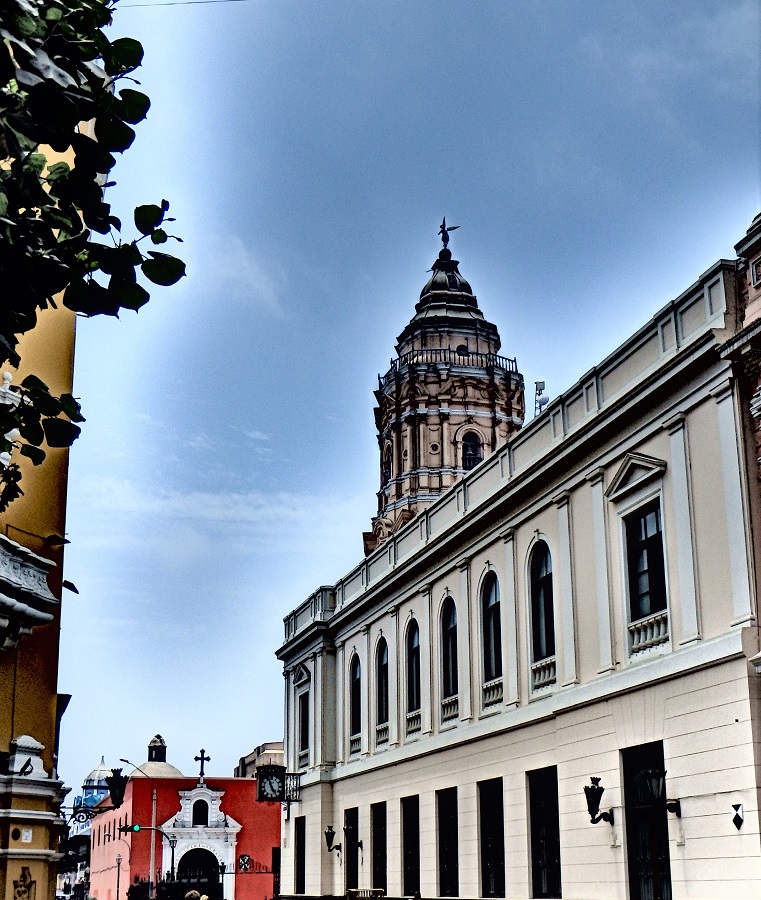
Within the church itself is a shrine in which the skulls of San Martín and Santa Rosa are proudly displayed and are said to answer people’s prayers.
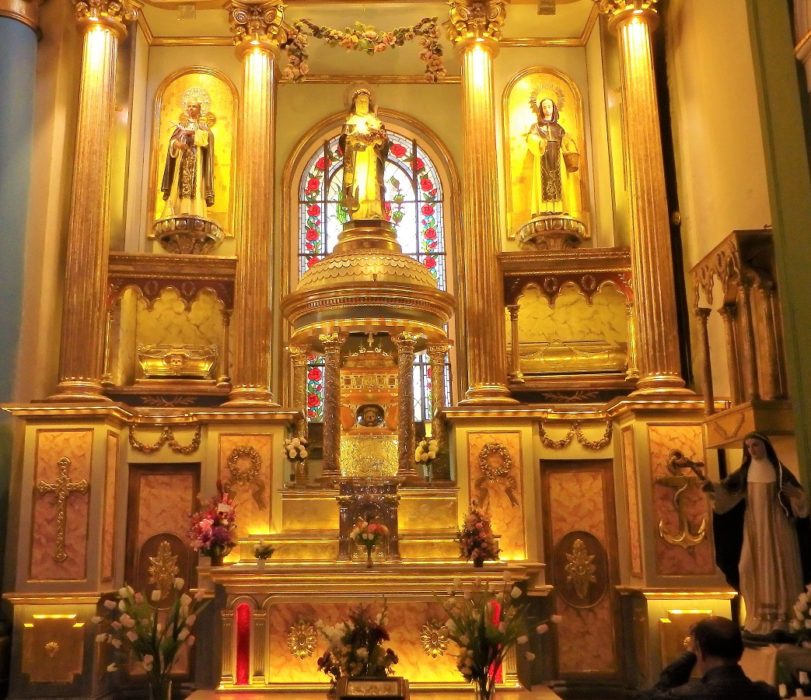
Another striking building within the historic center is the World Heritage Basílica y Convento de San Francisco. The notable significance of this church is that it contains a vast array of ancient texts and the remains of over 70,000 people!
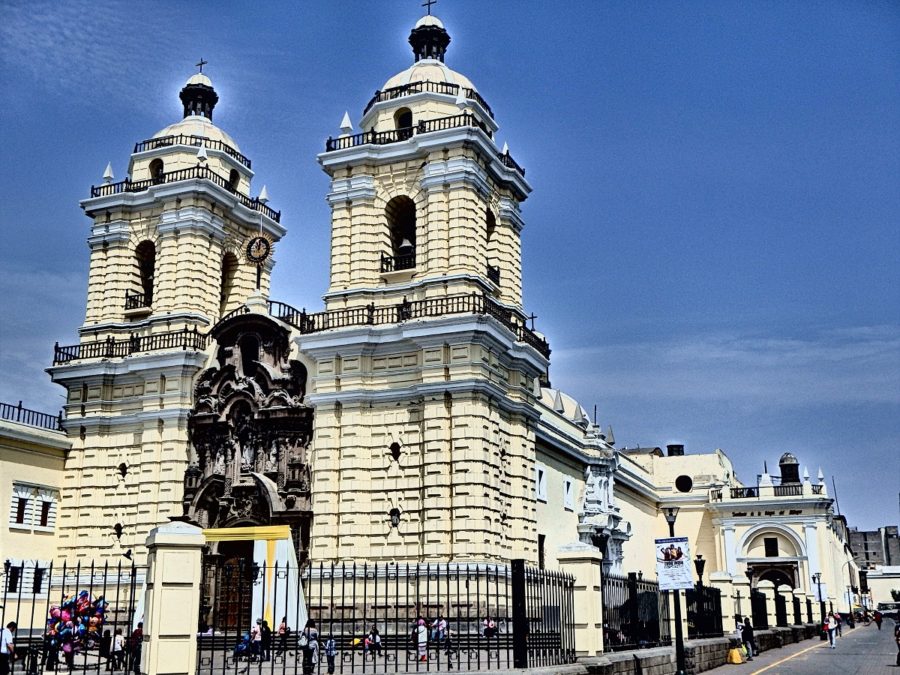
Rimac
Along the tour we briefly crossed into the central district of Rimac. This Quechua name was given after the river that still runs through it and, we were told, is where Lima actually acquired it’s name from.
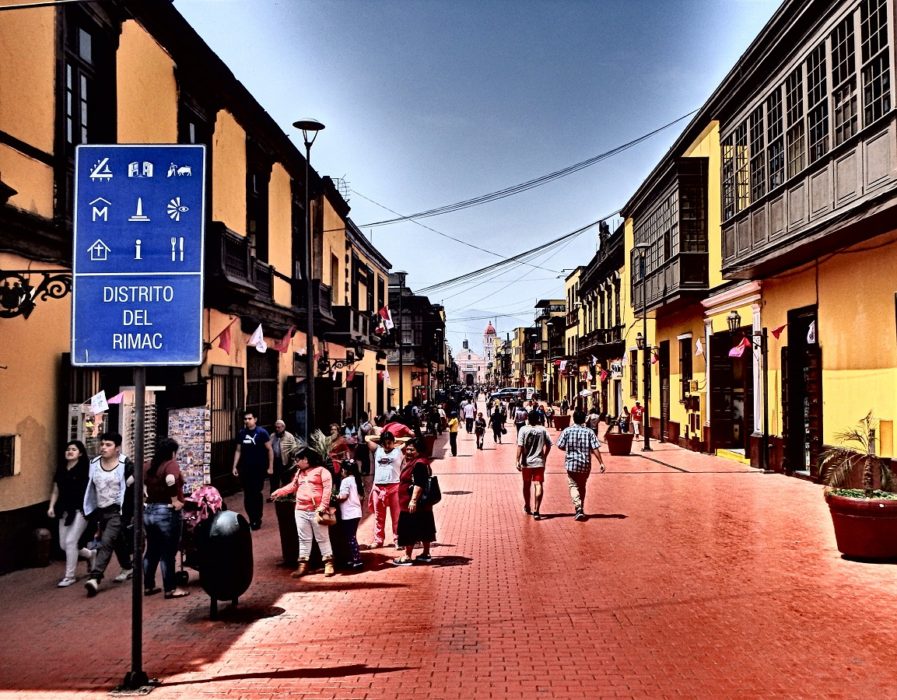
Rimac’s claim to fam is being home to Plaza de Toros de Acho. Built in 1766, it is the oldest bullfighting ring in the Americas. This tradition is still a popular sport here.
Another fascinating stop on route was to a cultural museum where we learned that Peru has over 40 indigenous tongues spoken across the country!
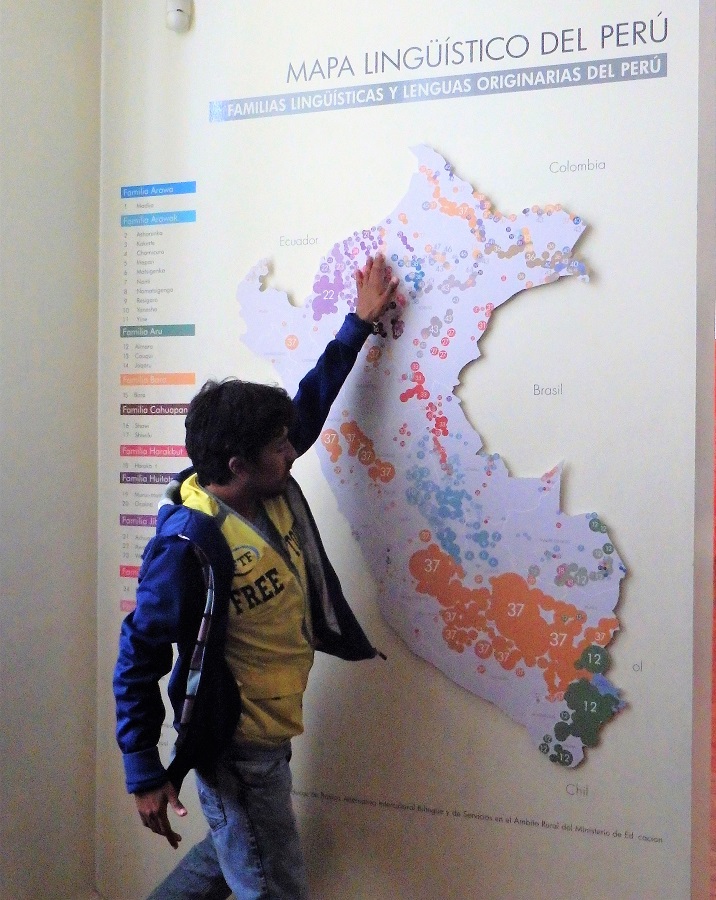
It was a very educational 3 hours!
The tour ended on a high as we were led to a small local restaurant where we each received a free pisco sour. Our first of many in Peru.
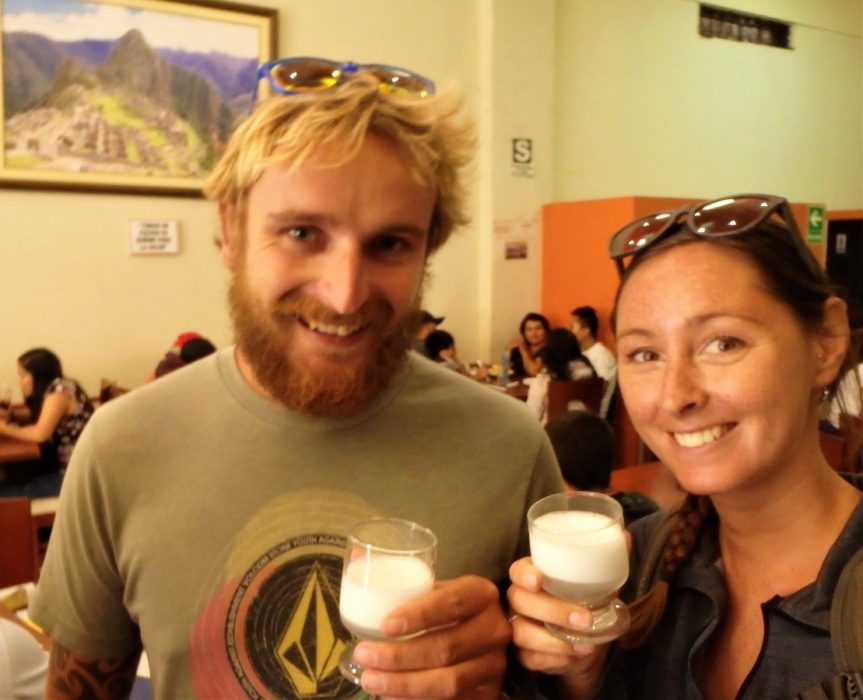
Budget tip: Most backpackers to South America want some form of memento from their trip. Like so many others, we wanted alpaca jumpers. For budget travellers, our advice is to buy these outside of the capital.
The starting price in markets in Lima was about 150 soles ($45 USD) for a poncho. I am so glad I held out as in Arequipa I got one in a market for just 50 soles ($15 USD). Plus I liked it even more!
Stroll through Parque Kennedy
Located in the heart of Lima’s Miraflores district is Kennedy Park.
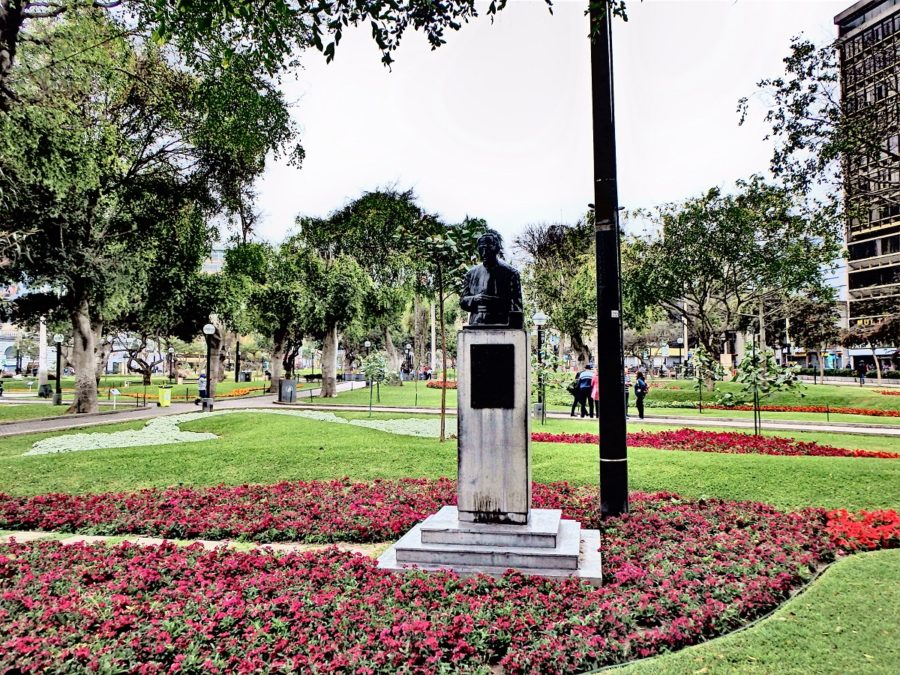
Named after the US president JFK, this park is now more famously known as Lima’s Cat Park. This is due to the several dozen or so stray cats that now call this place home having sadly been abandoned here.
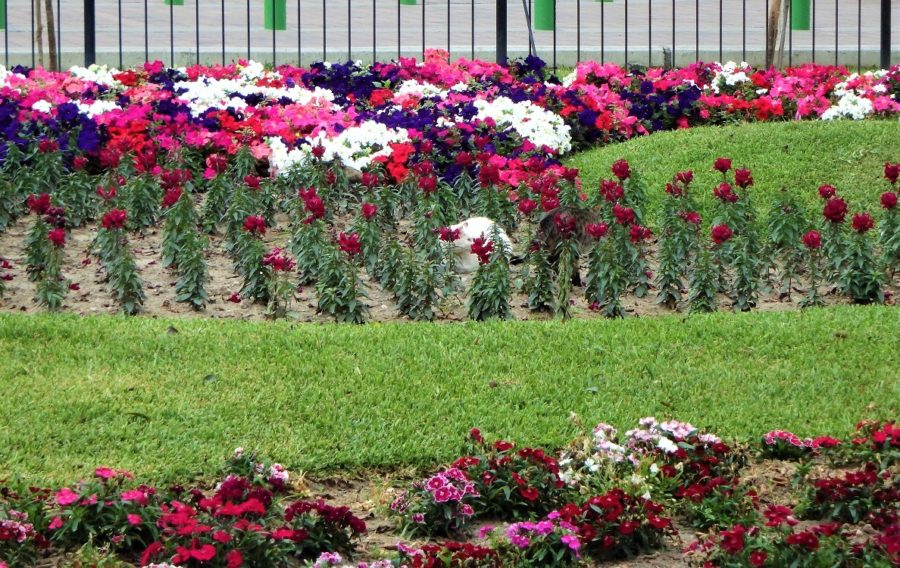
The good news is that these cats are well looked after thanks to local volunteers and we did see a local adoption agency working to rehome some of the younger ones.
Aside from enjoying the furry felines, we had always found that there was something going on in Park Kennedy after several trips through.
Throughout the day, local artists display their creations to sell to passers-by.
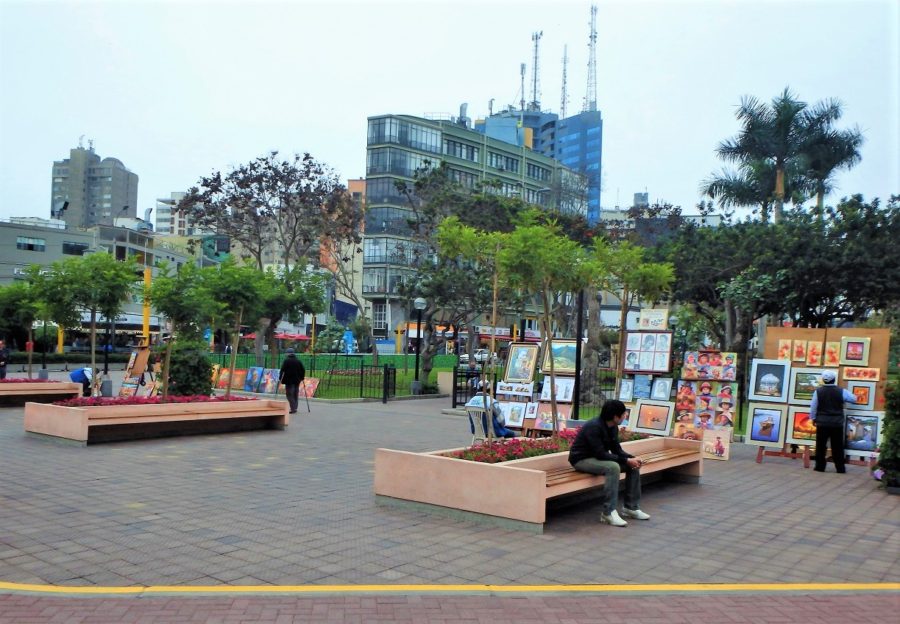
From the afternoons and into the evenings the park becomes more lively with street performers and entertainers.
The weekends get even more crazy. We passed through on a Sunday evening to discover blaring music and hundreds of people dancing! The atmosphere was fantatsic!
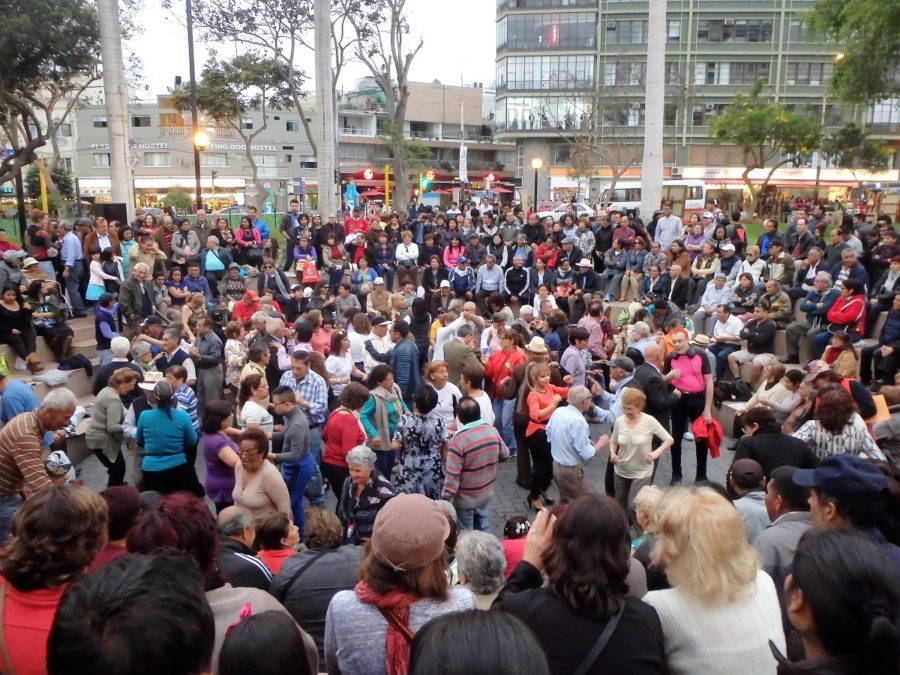
Walk the Malecón
Lima’s malecón stretches for several miles along the cliff tops of the Miraflores district.
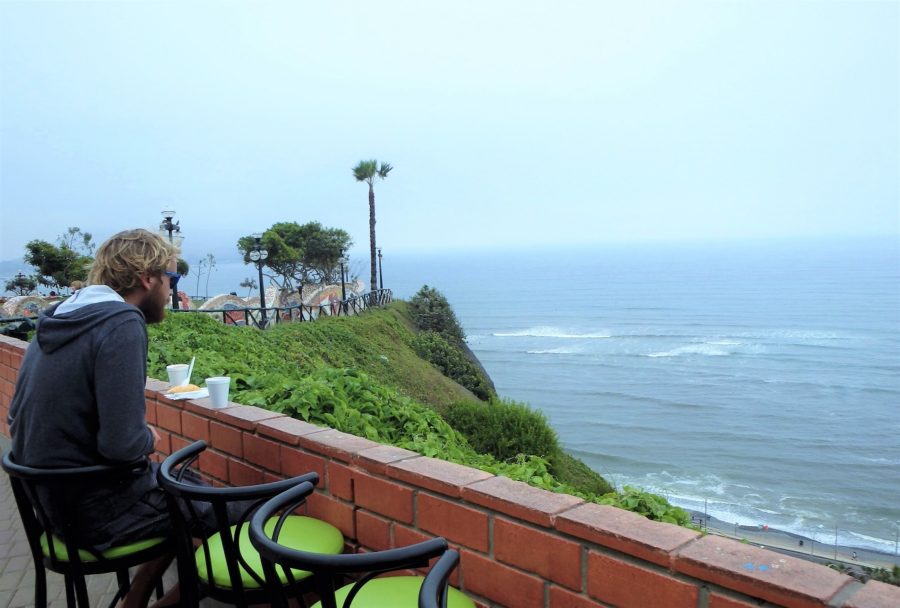
This scenic stroll is a great way for travelllers to escape the chaos of the city and embrace some fresh Pacific air! Even better for budgetting backpackers, it doesn’t cost a thing.
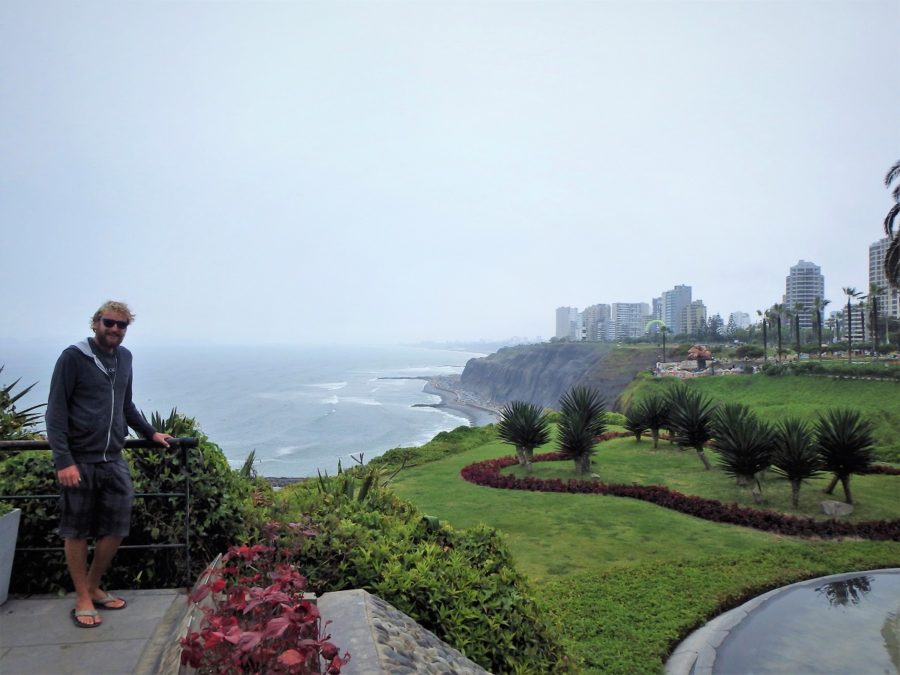
Along the path are several parks with flower gardens and statues formed by local artists.

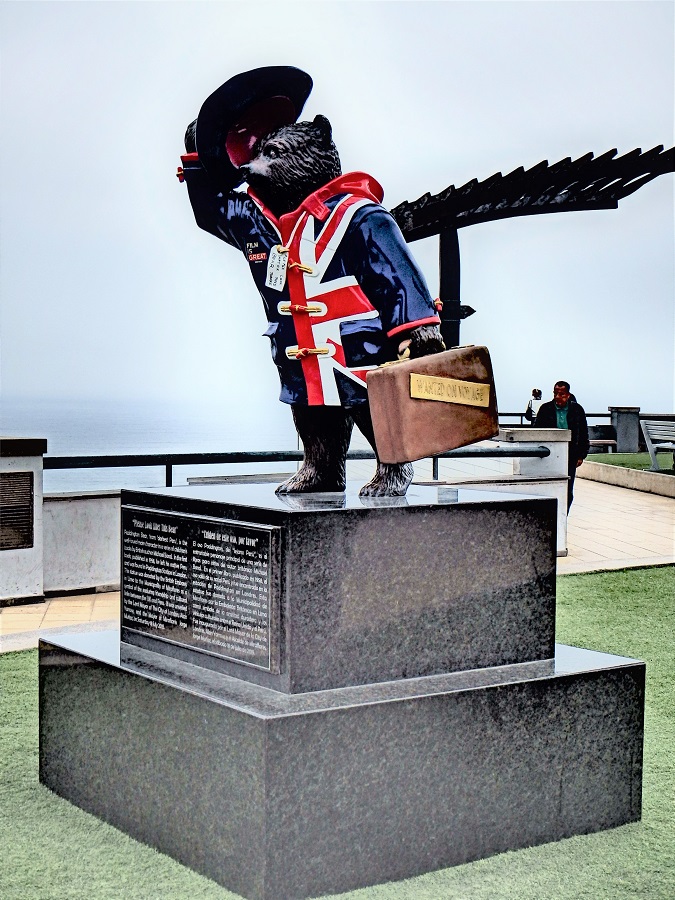
While the malecón is beautiful to visit any time of day, it is said to be a prime spot for stunning sunsets over the Pacific. Sadly we never got a break in the clouds during our visit but at least it didn’t rain!
Explore Barranco
South of Miraflores is Lima’s artsy/bohemian district of Barranco. It is a world away from the city’s historical centre.
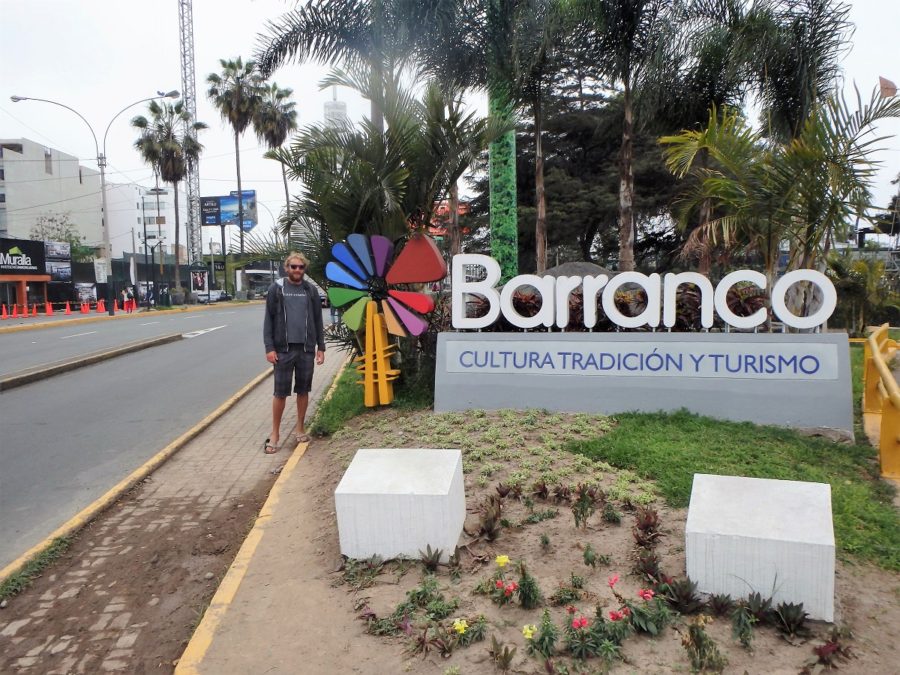
As soon as we crossed the district’s border we began to discover the colour and artisitc flare for which it is known.
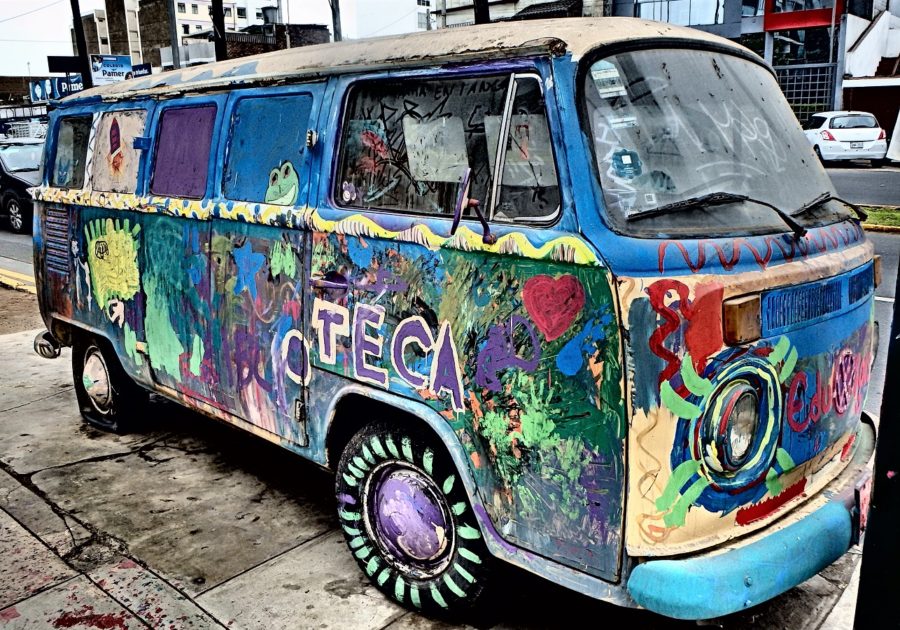
There is lots of street art!
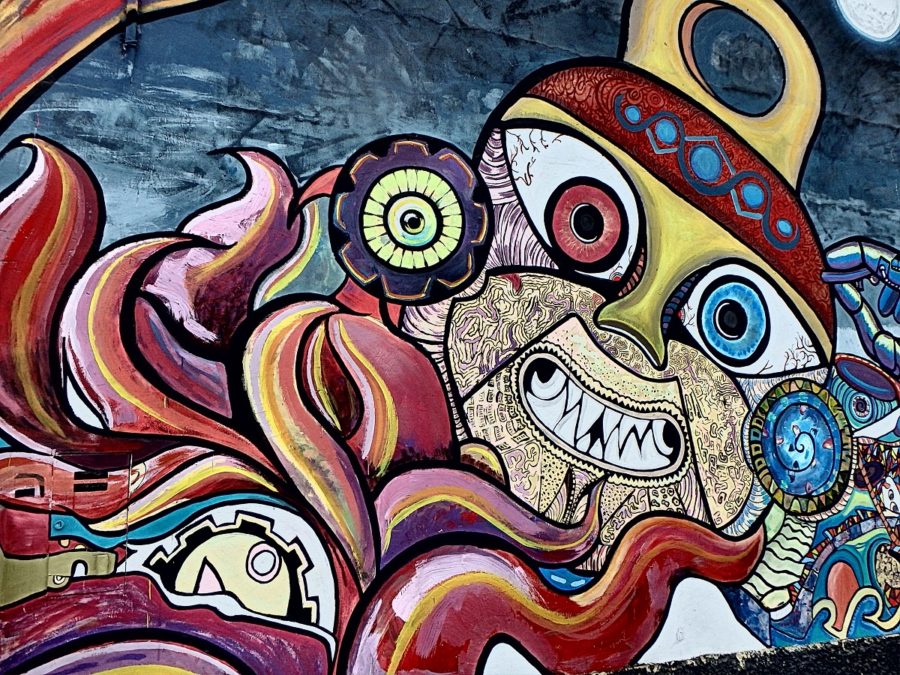
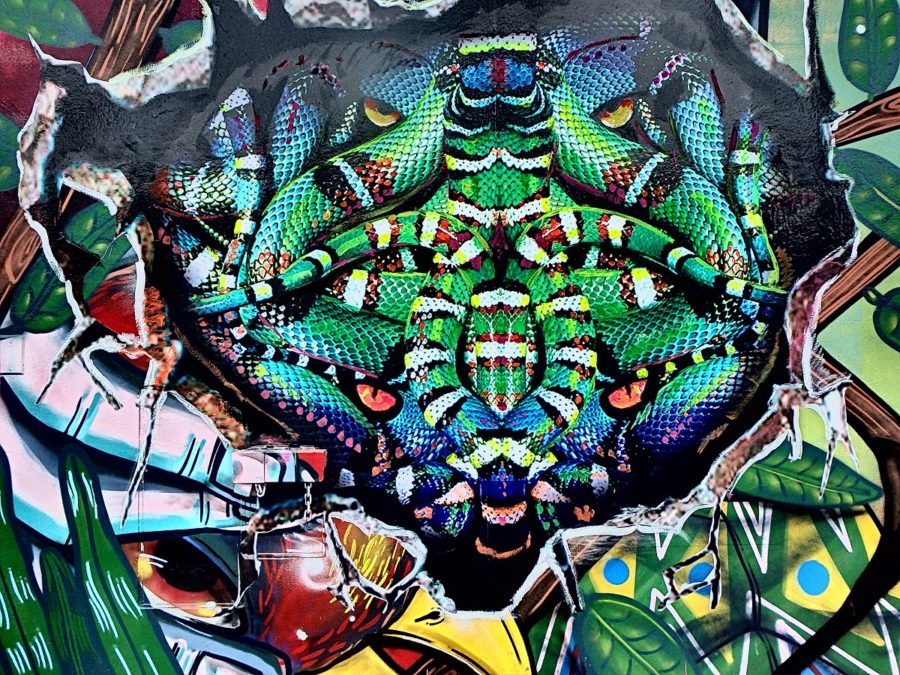
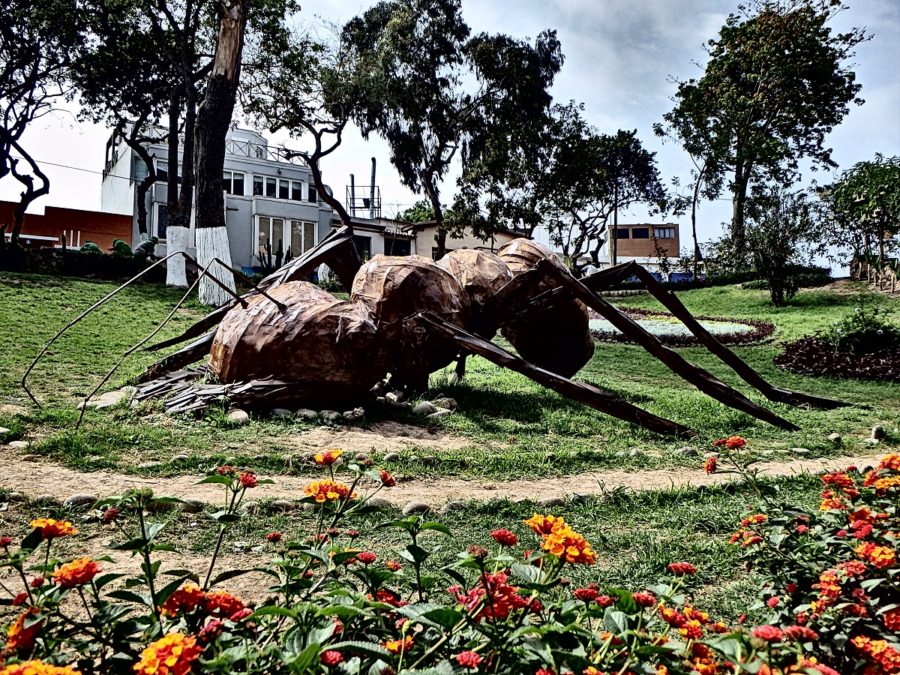
In addition to the local art, an iconic landmark in Barranco is Puente de Los Suspiros, the Bridge of Sighs.
Constructed in 1876, the bridge connetced two sides of a gorge over a stream running beneath. While the water no longer flows here, the bridge now serves as a muse for artists and composers.
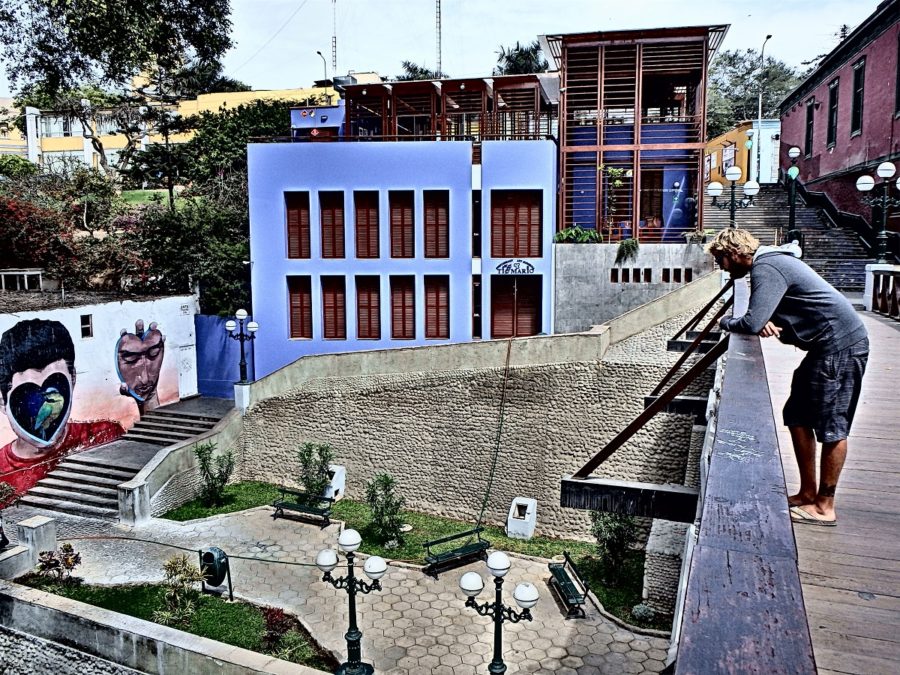
Visit Huaca Pucllana
Also conveniently located in Miraflores is Huaca Pucllana. This ancient structure, build around 200AD, is a clay pyramid consisting of several staggered platforms.
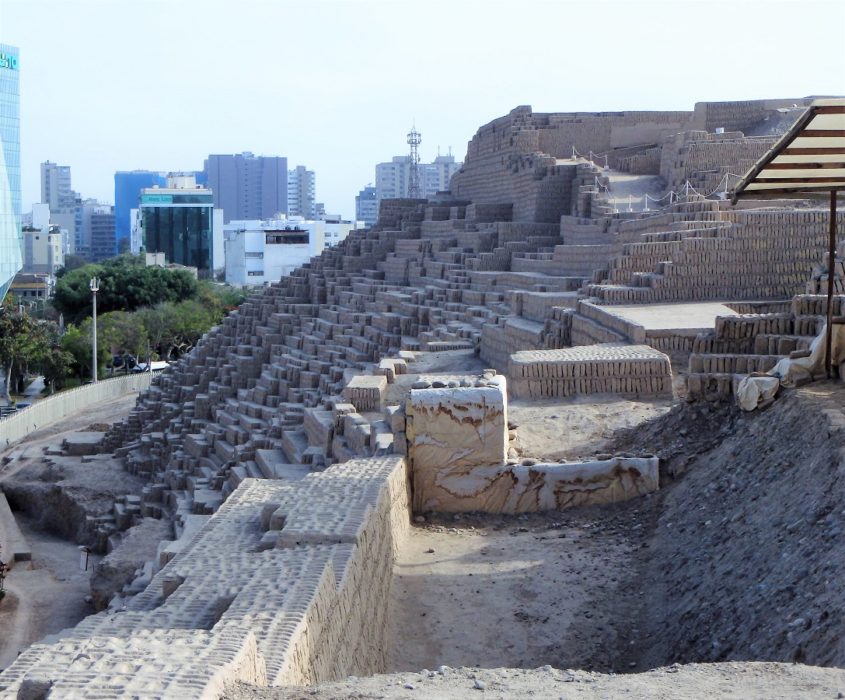
It serves as an important monument for the development of Lima’s culture, offering a window to the past of how early humans lived in this region.
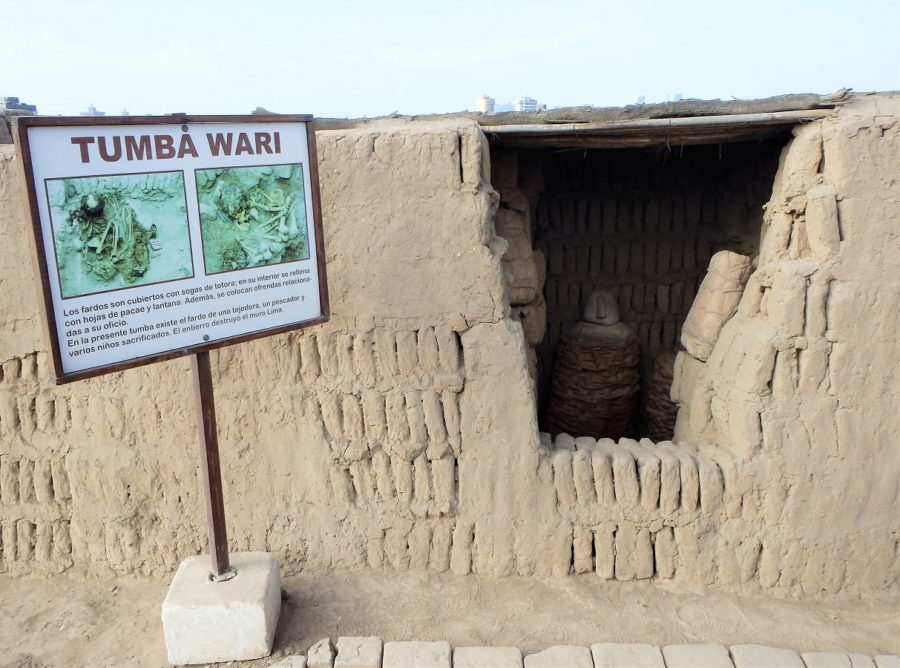
A visit here offers travellers the opportunity to experience yet another side of Lima. Plus, it’s budget-friendly! Entrance to the site costs just 15 soles ($4.50 USD) and include a guided tour.
Note: The site can only be accessed with a tour guide. Tours are regularly conducted in both English and Spanish.
Go surfing
The entirety of Peru’s western coast borders the Pacific and is a haven for water lovers and, most notably, for surfers.
For travellers looking to experience something new, Playa Waikiki and Playa Makaha below the cliffs of Miraflores are ideal for learners. There are numerous surf schools and rental shops along the shoreline.
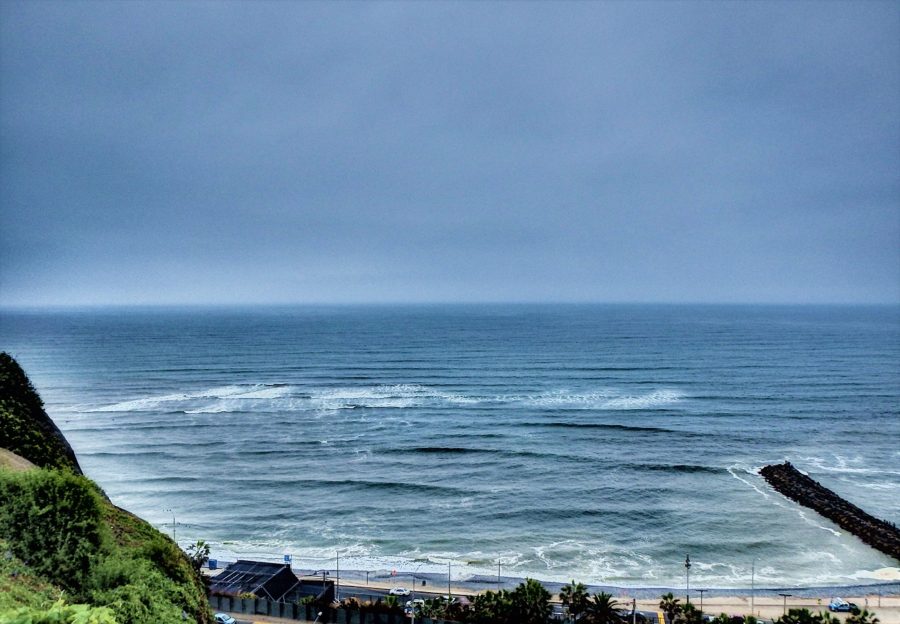
As a popular tourist destination, prices aren’t super cheap. Expect to pay around 30 soles ($10 USD) for a board and wetsuit rental.
When we visited the city in November the sea’s temperature was around 17C/63F so with the lack of sun we were not feeling brave enough, ha!
Note: For more experienced surfers then there are plenty more options along the coast offering a challenge.
Pico Alto Beach, in Lima’s southern district of Punta Hermosa boasts the biggest wave in South America and hosts world-class competitions each year!
Try Paragliding
The alternative to embracing the cold waters is to soar above them.
Walking along Lima’s malecón we saw countless paragliders launching themselves off the cliffs of Mirafores’ Costa Verde. This is without a doubt the best way to take in the full views of Lima and it’s coastline.
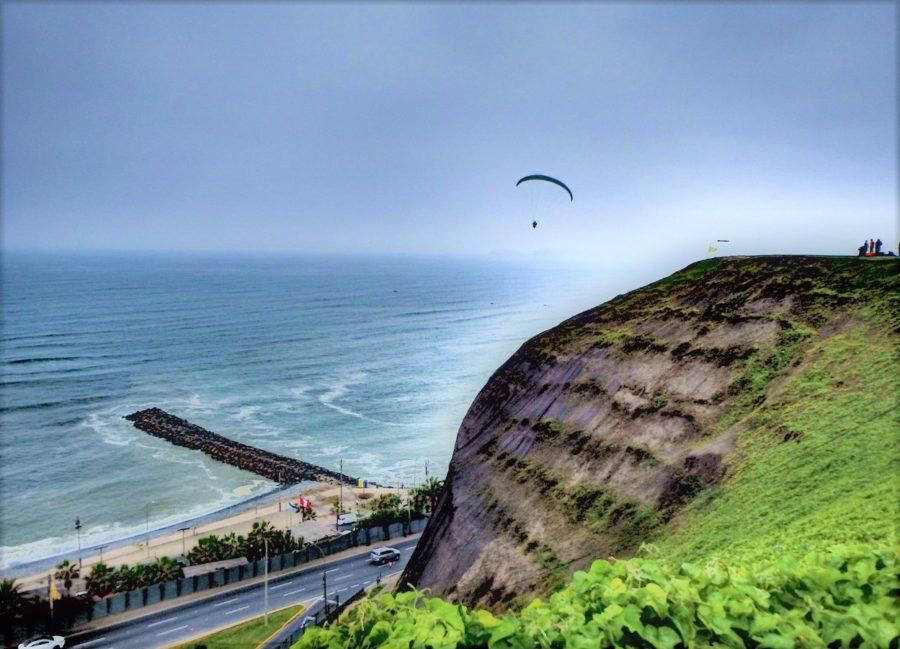
A word of caution however is that this is definitely not on a backpacker’s budget-friendly list of things to do in Lima. Just a short 10 minute flight can cost up to 260 soles ($75 USD)!
This cost wouldn’t have seemed so astronomical had we not done a flight a few weeks prior in Colombia’s San Gil for just $25 USD. But if it’s a new experience and money isn’t too much of a concern then we would totally say go for it! Just be sure to pick a clear, sunny day to get your money’s worth.
Eat everything!
The discovery of Peruvian cuisine for us was nothing short of a revelation for us. It’s a melting pot of both local and international cultures including Asia, Europe and Africa.
While meat plays a heavy part in the Peruvian Andes, since Lima is on the coast it is instead more about the seafood. And it is exceptionally good!

Undoubtedly one of Peru’s most famous dishes has to be ceviche.
We have eaten ceviche a few times prior but it was definitely unique here: the fish is more chunky, corn is a typical ingredient and everything sits in a pool of tiger’s milk (the acidic broth which ‘cooks’ the fish). It is bloomin’ delicious!
Not ever happy with trying just one dish however, we got super excited when we stumbled across a spot which offered a good variety of seafood and rice dishes. Food heaven is no exaggeration.
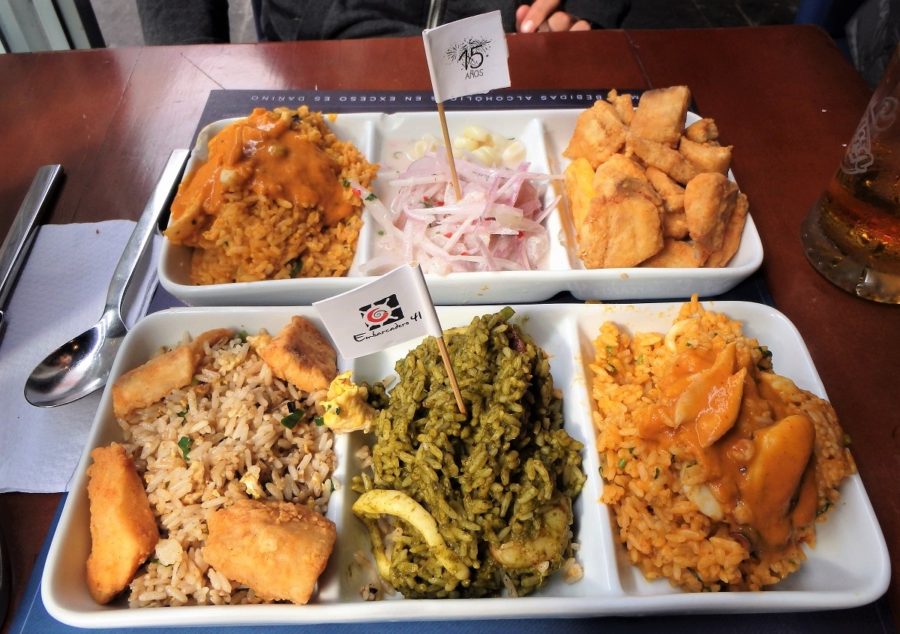
Visit a chifa
Another first for us in Lima was the discovery of lomo saltado.
Battling with ceviche for the title of Peru’s national dish, lomo saltado is a perfect example of the country’s Asian/South American fusion. I honestly cannot rave about this dish enough!
It is typically composed of beef, onions, tomatoes and chips (steak fries), all stir-fried to perfection and coated in this heavenly sauce and served with rice.

I genuinely must have eaten this dish about 10 times during our three weeks in Peru. I couldn’t get enough of it!
Now don’t get me wrong, not all lomo saltado’s are created equal but if you order from an authentic Chifa restaurant, you shouldn’t be disappointed.
Another dish every traveller to Peru should get their hands on is papa a la huancaína.
Literally just sliced and boiled potatoes covered in a spicy cheese sauce, it is simplicity at it’s best. It’s also another budget-friendly classic within our backpackers guide!
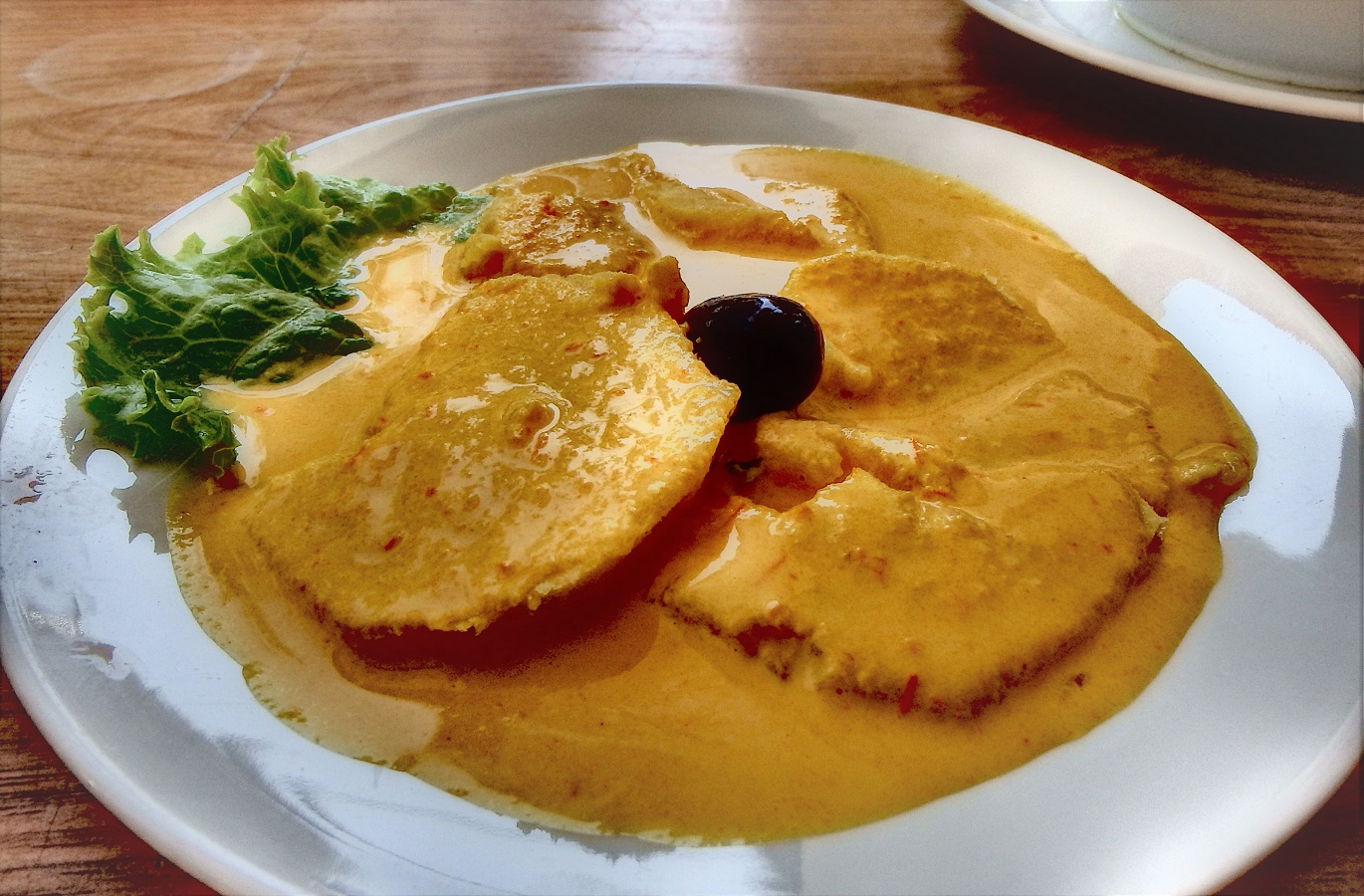
For the carnivores who want to dine a little more adventurously… anticuchos are a staple street food across Peru. I am slightly ashamed to admit it but this is one local delicacy that passed us by. We just couldn’t get over that those delicious-looking skewers were in fact made from beef hearts. Again… shameful I know.
Lastly, for those who like a sweet treat, picarones are another local favourite. They are like onion-ring-shaped doughnuts, only they are made from squash. Confusing, I know, but very tasty!
Where to stay in Lima
As the second largest city in South America, Lima is unquestionably huge.
It is made up of a total 43 districts with Miraflores and Barranco being two of the most affluent. It is here backpackers will find the majority of the hostels, hotels and any other accommodation.
With the additional note that Miraflores and Barranco are credited as being Lima’s safest districts, we figured it was a good place to start. since they are also side by side and easily walkable from each other, we weren’t too stressed about which one we stayed in. As long as it’s budget-friendly!
This is why, after a fair amount of research, we opted for the no-frills Hitchhikers Lima Hostel in Miraflores. Our 6 bed-dorm cost us just $10 USD each per night.
Plus, despite being cheap, the hostel had an outdoor courtyard with a ping pong table! That made us happy! We also met a other great backpackers there which always helps make a place.
Where the hostel fell short was the lack of showers and the breakfast of jam with stale bread. Not Peru’s finest and a waste of valuable stomach space in a city of exquisite food.
For a few alternative options, other hostels we considered include Alpes Lima, Pariwana Hostel and Barranco’s Backpackers Inn. They were all in decent locations and had some great reviews.
Note – It seems Hitchhikers hostel has since closed since we visited Lima.
How to get to Lima
Lima is one of the biggest transport hubs in Latin America, so flying there is definitely an easy option.
We flew in to Lima from Ecuador‘s capital, Quito, in the north. However, that doesn’t mean we made the right decision. As a backpackers guide to Lima, we are definitely focused on the budget side of travelling, and flying is not it.
So why did we fly, you ask? Honestly, we got caught up when planning our whole trip and getting a multi-flight deal (including our entry flight to Cartagena and return flights to the Galapagos).
Our 2.5 hour flight from Quito cost us over $300 USD, each. If we did it again, we would definitely be getting the bus which, by comparison, would collectively cost travellers around $100 USD.
A brutal 35 hour journey, many backpackers break this up with stops at Guayaquil and Mancora, which we disappointingly missed out on.
If you will be travelling from within Peru then consider Peru Hop as a source of transport. It is more expensive than other bus companies but does have its perks. We decided against it for us but it is hugely popular with travellers so worth checking out.
Have you booked yet?
All I can end this post on is to again reiterate that Lima has a great deal to offer backpackers, even those on a budget.
The sights and unforgettable food made this city one of our favourites in South America. We therefore hope our backpackers guide to Lima will encourage your own adventure to this sprawling metropolis.
Happy travels!
Like this blog? Pin it!
